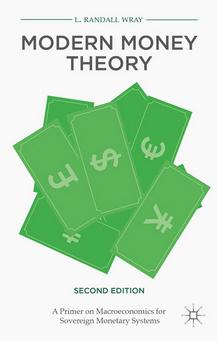
Research Topics
Publications on Nature of money
-
Modern Money Theory: A Primer on Macroeconomics for Sovereign Monetary Systems, Second Edition
Book Series, September 2015 | September 2015By L. Randall Wray

In a completely revised second edition, Senior Scholar L. Randall Wray presents the key principles of Modern Money Theory, exploring macro accounting, monetary and fiscal policy, currency regimes, and exchange rates in developed and developing nations. Wray examines how misunderstandings about the nature of money caused the recent global financial meltdown, and provides fresh ideas about how leaders should approach economic policy. This updated edition also includes new chapters on tax policies and inflation.
Published by: Palgrave Macmillan
-
The Rise of Money and Class Society
Working Paper No. 832 | February 2015The Contributions of John F. Henry
This paper explores the rise of money and class society in ancient Greece, drawing historical and theoretical parallels to the case of ancient Egypt. In doing so, the paper examines the historical applicability of the chartalist and metallist theories of money. It will be shown that the origins and the evolution of money were closely intertwined with the rise and consolidation of class society and inequality. Money, class society, and inequality came into being simultaneously, so it seems, mutually reinforcing the development of one another. Rather than a medium of exchange in commerce, money emerged as an “egalitarian token” at the time when the substance of social relations was undergoing a fundamental transformation from egalitarian to class societies. In this context, money served to preserve the façade of social and economic harmony and equality, while inequality was growing and solidifying. Rather than “invented” by private traders, money was first issued by ancient Greek states and proto-states as they aimed to establish and consolidate their political and economic power. Rather than a medium of exchange in commerce, money first served as a “means of recompense” administered by the Greek city-states as they strived to implement the civic conception of social justice. While the origins of money are to be found in the origins of inequality, a well-functioning democratic society has the power to subvert the inequality-inducing characteristic of money via the use of money for public purpose, following the principles of Modern Money Theory (MMT). When used according to the principles of MMT, the inequality-inducing characteristic of money could be undermined, while the current trends in rising income and wealth disparities could be contained and reversed. -
Introduction to an Alternative History of Money
Working Paper No. 717 | May 2012This paper integrates the various strands of an alternative, heterodox view on the origins of money and the development of the modern financial system in a manner that is consistent with the findings of historians and anthropologists. As is well known, the orthodox story of money’s origins and evolution begins with the creation of a medium of exchange to reduce the costs of barter. To be sure, the history of money is “lost in the mists of time,” as money’s invention probably predates writing. Further, the history of money is contentious. And, finally, even orthodox economists would reject the Robinson Crusoe story and the evolution from a commodity money through to modern fiat money as historically accurate. Rather, the story told about the origins and evolution of money is designed to shed light on the “nature” of money. The orthodox story draws attention to money as a transactions-cost-minimizing medium of exchange.
Heterodox economists reject the formalist methodology adopted by orthodox economists in favor of a substantivist methodology. In the formalist methodology, the economist begins with the “rational” economic agent facing scarce resources and unlimited wants. Since the formalist methodology abstracts from historical and institutional detail, it must be applicable to all human societies. Heterodoxy argues that economics has to do with a study of the institutionalized interactions among humans and between humans and nature. The economy is a component of culture; or, more specifically, of the material life process of society. As such, substantivist economics cannot abstract from the institutions that help to shape economic processes; and the substantivistproblem is not the formal one of choice, but a problem concerning production and distribution.
A powerful critique of the orthodox story regarding money can be developed using the findings of comparative anthropology, comparative history, and comparative economics. Given the embedded nature of economic phenomenon in prior societies, an understanding of what money is and what it does in capitalist societies is essential to this approach. This can then be contrasted with the functioning of precapitalist societies in order to allow identification of which types of precapitalist societies would use money and what money would be used for in these societies. This understanding is essential for informed speculation on the origins of money. The comparative approach used by heterodox economists begins with an understanding of the role money plays in capitalist economies, which shares essential features with analyses developed by a wide range of Institutionalist, Keynesian, Post Keynesian, and Marxist macroeconomists. This paper uses the understanding developed by comparative anthropology and comparative history of precapitalist societies in order to logically reconstruct the origins of money.
Download:Associated Program:Author(s):
